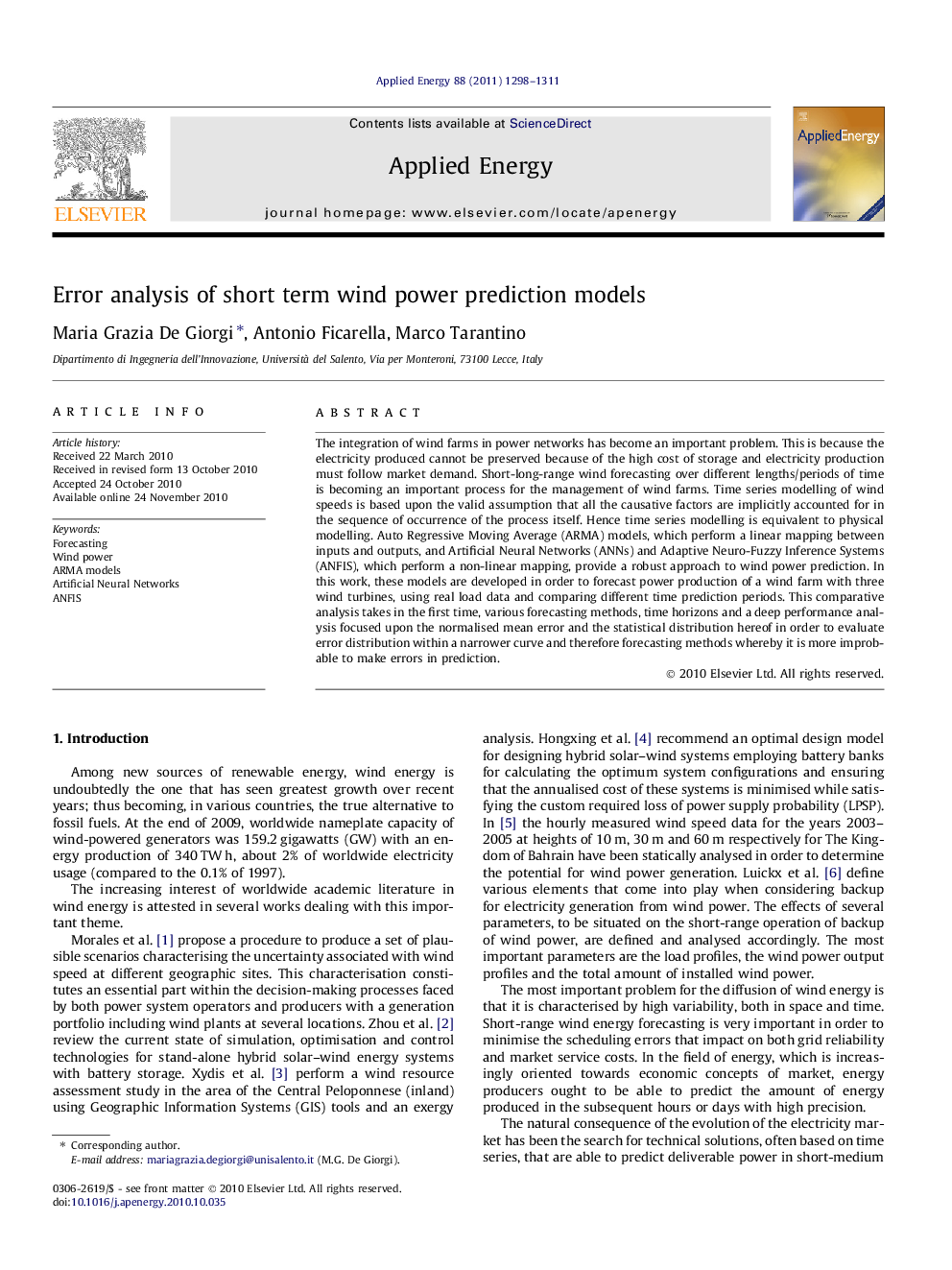| Article ID | Journal | Published Year | Pages | File Type |
|---|---|---|---|---|
| 244266 | Applied Energy | 2011 | 14 Pages |
The integration of wind farms in power networks has become an important problem. This is because the electricity produced cannot be preserved because of the high cost of storage and electricity production must follow market demand. Short-long-range wind forecasting over different lengths/periods of time is becoming an important process for the management of wind farms. Time series modelling of wind speeds is based upon the valid assumption that all the causative factors are implicitly accounted for in the sequence of occurrence of the process itself. Hence time series modelling is equivalent to physical modelling. Auto Regressive Moving Average (ARMA) models, which perform a linear mapping between inputs and outputs, and Artificial Neural Networks (ANNs) and Adaptive Neuro-Fuzzy Inference Systems (ANFIS), which perform a non-linear mapping, provide a robust approach to wind power prediction. In this work, these models are developed in order to forecast power production of a wind farm with three wind turbines, using real load data and comparing different time prediction periods. This comparative analysis takes in the first time, various forecasting methods, time horizons and a deep performance analysis focused upon the normalised mean error and the statistical distribution hereof in order to evaluate error distribution within a narrower curve and therefore forecasting methods whereby it is more improbable to make errors in prediction.
